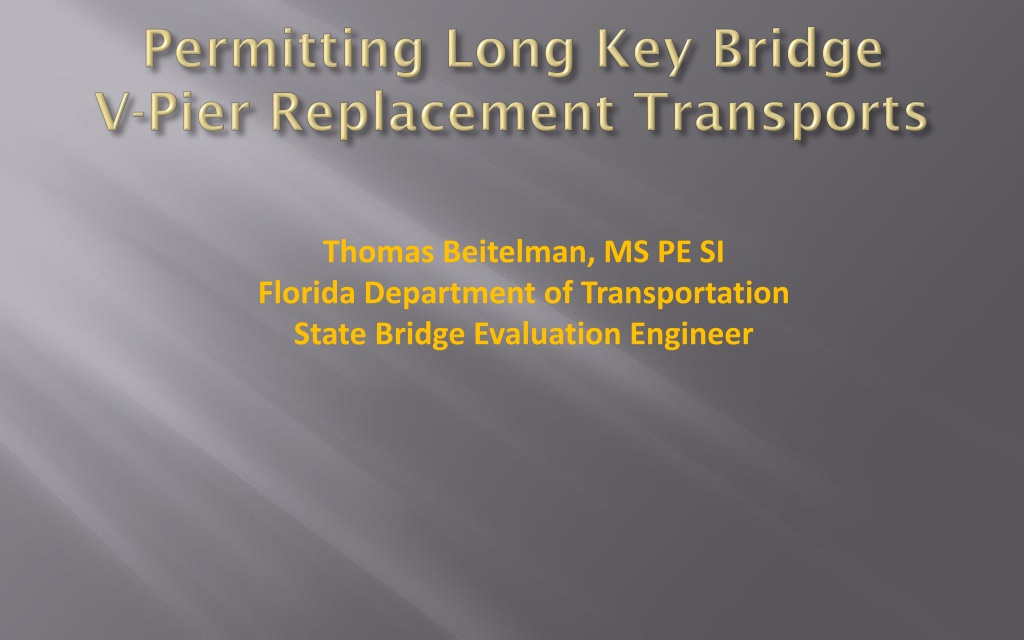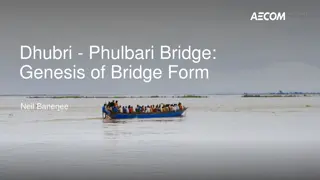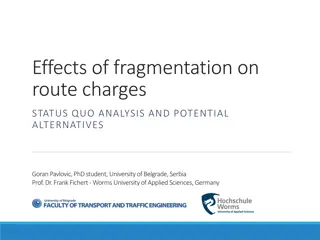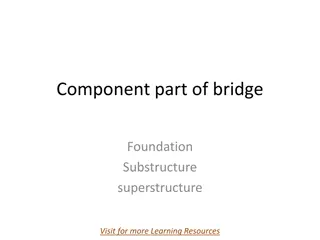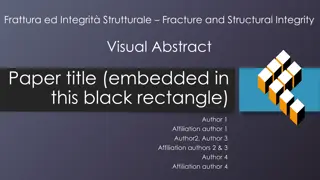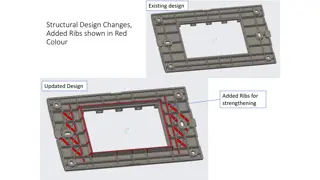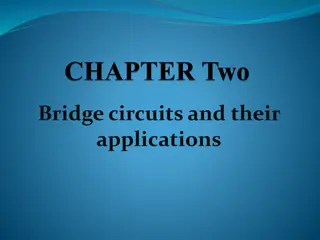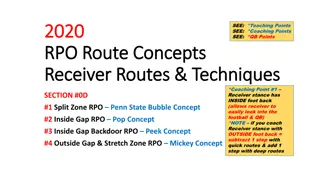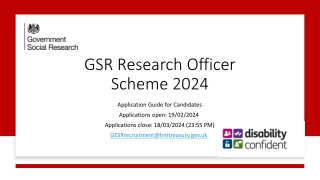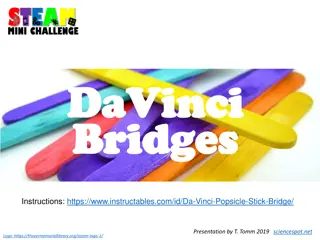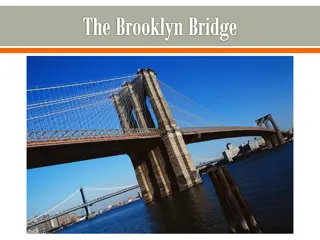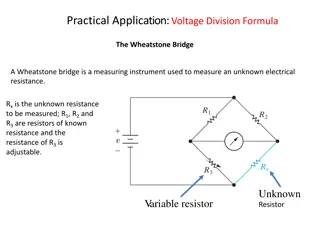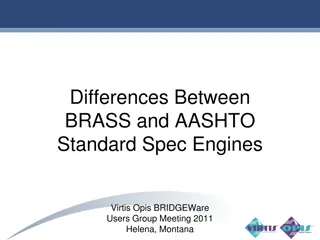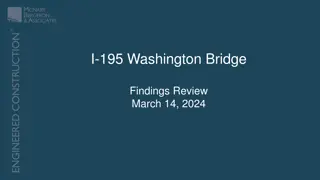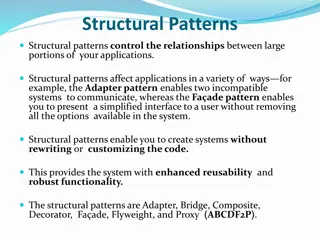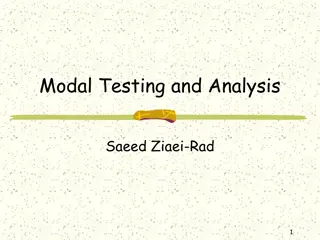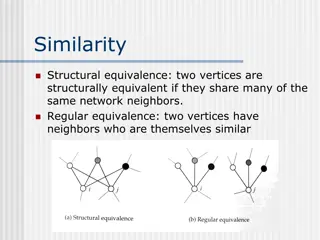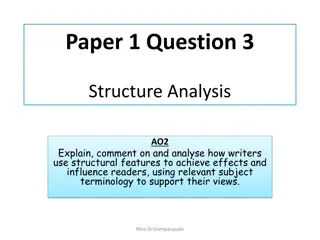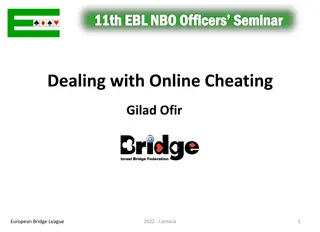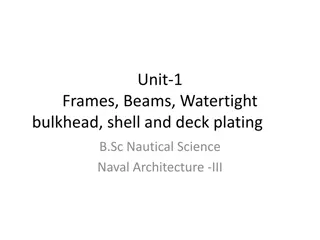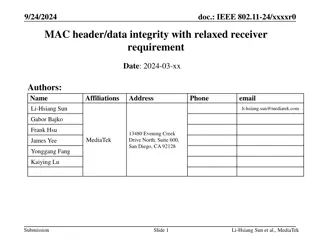Bridge Evaluation and Route Planning: Ensuring Structural Integrity
Thomas Beitelman, a State Bridge Evaluation Engineer at the Florida Department of Transportation, shares insights into the evaluation of routes for large haulers, overcoming challenges such as dimensional rejections and overloaded structures, and making informed decisions to ensure safety and compliance. With a focus on critical factors like local shear and moments, segmental box girder strength, and in-depth analysis, the team navigates potential issues to maintain optimal bridge performance.
Download Presentation

Please find below an Image/Link to download the presentation.
The content on the website is provided AS IS for your information and personal use only. It may not be sold, licensed, or shared on other websites without obtaining consent from the author. Download presentation by click this link. If you encounter any issues during the download, it is possible that the publisher has removed the file from their server.
E N D
Presentation Transcript
Thomas Beitelman, MS PE SI Florida Department of Transportation State Bridge Evaluation Engineer
13 Axles 16 -10 Wide 135 -0 Long 218,000 lbs 328 Roadway Miles
Route starts in Tampa START Ends at Long Key Bridge Dozens of routes were evaluated Rejection - Dimensional Rejection Overloaded structures Rejection Construction, coordination, etc. Eventually Approved route END900098 Oops! Last minute construction Oops! Bridge over Channel #5
900098 Over Channel Five Problem Structure Segmental Box Low Operating Rating Bridge would be 60% over loaded 900098 END Hauler had received prior approval Options: 1 Barge .not well received 2 In-depth Engineering review
Local shear and moments Wheel positions Factors in our favor: 1 Segmental Box Girder internal strength 2 Load testing performed by FDOT
Typical 3D Influence Surface - 84" Cantilever Wing 1000 0 0 42 -1000 84 126 -2000 168 210 -3000 252 -4000 294 336 24" 378 84"
Typical 3D Influence Surface - Slab Between Webs 500 0 0 Influence Coefficient 30 60 -500 90 120 150 -1000 198 180 180 162 210 144 240 126 108 -1500 270 90 72 300 54 36 330 18 -2000 0 360 -2500
Based on FDOT lab test Joints would not open Joints would not be over-stressed Based on In-Depth Analysis Crawl vehicle over the bridge (zero impact) Precise positioning of wheels (optimum stresses) 10% under the maximum
